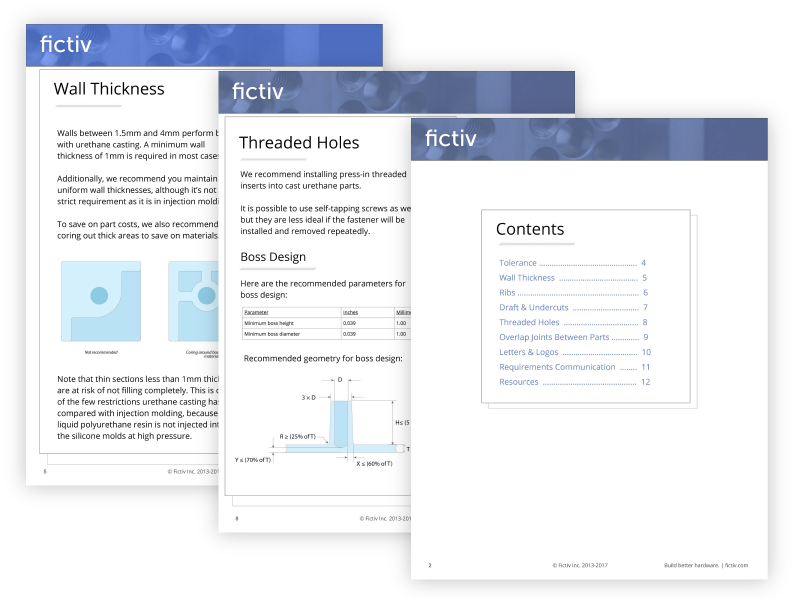Best Practices for Urethane Casting Design
Urethane casting, also known as RTV, or room temperature vulcanization, is a very flexible and forgiving process. Most parts that can be 3D printed or CNC machined can also be urethane cast. Different from 3D printing and CNC machining, urethane casting production-quality plastic parts with almost limitless complexity. In this design guide, we'll walk you through the basics of designing parts for optimal urethane casting production including guidelines on tolerancing, wall thickness, rib design, draft requirements, undercuts, threaded holes, and more. To get an instant quote for your urethane casting project, create your free account at fictiv.com.
- Cover the basics of designing parts for optimal urethane casting production.
- Guidelines on tolerancing.
- Tips on wall thickness and rib design.
- Draft requirements.
- Guidance on undercuts, threaded holes, and more.







